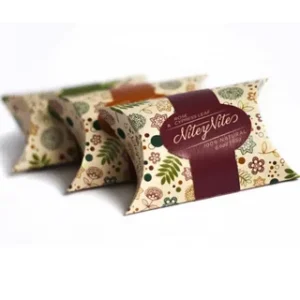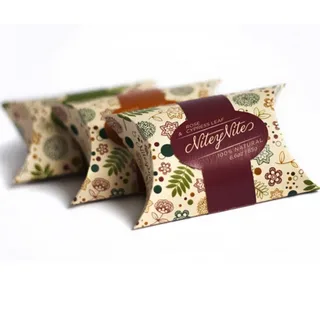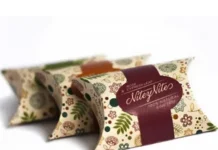In today’s world, where product presentation plays a crucial role in capturing consumer interest, small soap box packaging has emerged as a key component in product branding and sales. Packaging goes beyond mere protection; it serves as a visual and tactile communication medium that reflects the values of a brand. In this ultimate guide, we’ll cover everything you need to know about small soap box packaging—from design essentials to materials, trends, and eco-friendly options—to help you make informed choices that will elevate your soap products in a competitive market.
Why Small Soap Box Packaging Matters
Small soap box packaging does more than protect your product. It creates the first impression and tells your brand’s story at a glance. A well-designed box can communicate luxury, sustainability, or handmade authenticity, drawing customers in and influencing their purchasing decisions. Furthermore, thoughtfully designed packaging can add value to your soap products, fostering brand loyalty and repeat sales.
Key Elements of Effective Soap Box Packaging
Creating impactful soap box packaging involves several components. Let’s delve into the essential elements that contribute to successful packaging:
1. Material Selection
Selecting the right material for small soap boxes is crucial, as it impacts both the look and feel of the package as well as its environmental footprint. Popular materials include:
- Kraft Paper: Known for its natural and eco-friendly appearance, Kraft paper is highly recyclable and has a rustic aesthetic that appeals to environmentally conscious consumers.
- Cardboard: Durable and flexible, cardboard is often used in soap box packaging for its cost-effectiveness and suitability for various printing techniques.
- Recycled Materials: Using recycled paper and cardboard enhances sustainability, allowing brands to market their products as eco-conscious choices.
- Corrugated Cardboard: Ideal for added protection, this material is often used for delicate or premium products, though it may not be necessary for lightweight soaps.
2. Functional Design
The design of small soap boxes should prioritize both aesthetics and usability. Key design aspects include:
- Size and Shape: Ensure the box dimensions align with the size of the soap. A snug fit not only reduces material waste but also gives the box a clean, finished look.
- Opening Mechanism: Boxes with easy-to-open flaps or sliders enhance the customer experience, while sturdy closures prevent product damage.
-
.

3. Branding and Graphics
Branding is vital in creating recognizable and memorable packaging. Design elements that enhance branding include:
- Logo and Brand Name: Prominently displaying your brand logo helps establish brand recognition and trust.
- Color Schemes: Colors convey mood and appeal; earth tones are often associated with natural or organic products, while vibrant hues may convey energy and freshness.
- Typography: Use legible fonts that match your brand’s style, whether it’s vintage, modern, or minimalist.
- Imagery and Patterns: Subtle illustrations, textures, or patterns can add character to your packaging, giving it a distinctive look.
4. Sustainability
With growing consumer demand for sustainable products, eco-friendly packaging has become essential. Key ways to incorporate sustainability into your soap packaging include:
- Biodegradable Materials: Use biodegradable materials, such as Kraft paper or compostable plastics, which break down without harming the environment.
- Minimalist Design: Embrace minimalism by reducing unnecessary elements and limiting ink coverage, which reduces the overall environmental impact.
- Recyclable Components: Choose packaging materials that are easy to recycle, like cardboard and paper-based adhesives, to appeal to eco-conscious customers.
Innovative Trends in Soap Box Packaging
Keeping up with trends can help your product stand out on crowded shelves. Here are some of the current innovations in small soap box packaging:
1. Minimalist Packaging
Minimalist designs, focusing on simple fonts and natural colors, have become increasingly popular. Minimalism often conveys elegance and sophistication, appealing to consumers looking for clean and pure products.
2. Bold Graphics and Color Contrasts
Contrasting colors and bold, graphic designs can make soap packaging more eye-catching. Brands that embrace this trend often use black-and-white or complementary color schemes that create a strong visual impact and enhance brand identity.
3. Interactive Packaging
Interactive packaging includes boxes with features like foldable designs, pop-ups, or perforated edges, encouraging customers to engage with the product. This approach can enhance brand loyalty by creating a memorable unboxing experience.
4. Customization and Personalization
Personalized packaging—such as including the customer’s name or a special message—can make the product feel unique and thoughtful, fostering a deeper connection between the brand and the customer.
5. Eco-Friendly Statements
Highlighting eco-friendly practices on packaging, such as “100% recyclable” or “plastic-free,” can help draw in environmentally conscious consumers and differentiate the product from less sustainable options.
How to Design Custom Small Soap Boxes
Custom packaging not only allows you to differentiate your brand but also gives you control over every detail. When designing a custom soap box, consider the following steps:
1. Choose Your Box Style
The style of your soap box can influence its perceived value. Popular styles include:
- Tuck-End Boxes: A versatile and affordable option with a simple tuck-in closure.
- Sleeve Boxes: An outer sleeve that slides over the soap, offering a luxurious, unboxing experience.
- Pillow Boxes: Shaped like pillows, these unique boxes can add a distinctive look and feel, though they may be less protective.
2. Create a Digital Mockup
Using graphic design software, create a digital mockup of your soap box design. This lets you visualize how elements like colors, fonts, and images will look on the final product and make adjustments as needed.
3. Experiment with Finishing Options
Different finishes can elevate the look of your packaging. Consider these finishing touches:
- Matte Finish: A soft, non-reflective finish that gives a sophisticated, high-end look.
- Glossy Finish: A shiny finish that enhances colors, making the packaging more vibrant and eye-catching.
- Embossing/Debossing: Adding texture through embossing or debossing creates a tactile experience, enhancing the premium feel of your product.
4. Print and Prototype
Once you finalize the design, print a sample to ensure that colors, dimensions, and design elements appear as intended. Testing a prototype can reveal any last-minute changes needed before mass production.
Packaging Compliance and Regulations
When creating soap box packaging, it’s essential to follow regulatory guidelines to ensure the safety and legality of your product. Important factors include:
- Labeling Requirements: Be aware of the eco friendly soap packaging, specific labeling requirements in your region, including ingredient lists, weight, and usage warnings.
- Health and Safety Standards: Ensure that your packaging materials comply with health and safety standards to prevent contamination or degradation of your soap products.
The Impact of Small Soap Box Packaging on Brand Perception
In a saturated market, well-designed packaging can be a significant differentiator. Customers are drawn to packaging that reflects quality and care, often associating these traits with the product itself. By investing in high-quality, thoughtfully designed soap box packaging, brands can enhance their image and foster customer loyalty.
Conclusion
Small soap box packaging is an essential component of branding, playing a role in customer acquisition, product protection, and sustainability. By considering materials, functionality, branding, and current trends, you can create packaging that not only stands out on the shelf but also resonates with customers. High-quality packaging reflects a brand’s values, whether those are luxury, sustainability, or artisanal craftsmanship, and can make all the difference in a competitive market.








